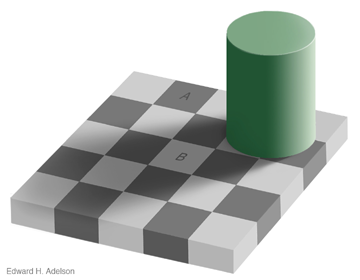Tom Lieber's Microblog
alltom.com,
Archive,
Currently Reading,
Have Read,
Micro.blog
Subscribe with RSS or @tom@micro.alltom.com
Jan 11, 2024
The “Cognition” in Probabilistic Models of Cognition 📚 is the hardest part to get across when I recommend this book. Because the book isn’t “Bayes works, yawn.” It’s so much more interesting if you, like me, exist primarily in ML circles that focus on curve-fitting:
- What could be going on in our heads when we can’t tell that the two grid squares in that optical illusion are the same color? (Here’s an idea)
- Can a computer model explain what makes it difficult for people to tell whether some stacks of blocks will fall? (Seems like it)
- People seem to communicate by picking words that maximize the likelihood of a listener understanding them, according to our internal models of those listeners, which includes their attempt to guess what we would say to maximize being understood, which includes their attempt to guess… anyway, do we get sensible results of computers model listeners modeling speakers modeling listeners…? (Yes!)
- Did you know that you learn more about world state transitions from observations if you assume that the actor is rational? (It’s true, and this chapter is the most mind-blowing for me)
There are tiny, self-contained, editable code examples to demonstrate almost every point, and they run in-browser! I love this book.
